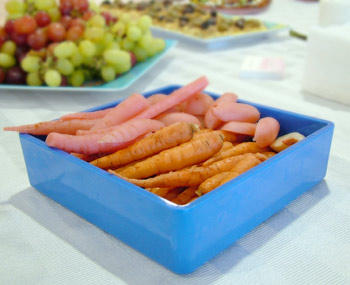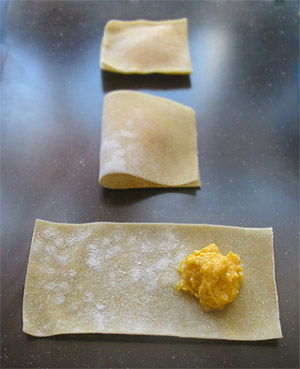 My uncle used to be a chef. He worked for a catering company in the 80′s. On his last visit, we were chatting about the work he used to do, hors d’oeuvre de riguer, and monstrous brides. Somewhere in this same conversation we were discussing wedding cakes, and he mentioned that apricot buttercream was all of the rage in the 80′s. Apricot buttercream? Why that sounds delicious! How did such a delicious combination of butter, powdered sugar, and apricot preserves ever fall out of favor? Why aren’t people making huge vats of apricot buttercream and frosting everything in sight? This delightful concoction was something I had to try.
My uncle used to be a chef. He worked for a catering company in the 80′s. On his last visit, we were chatting about the work he used to do, hors d’oeuvre de riguer, and monstrous brides. Somewhere in this same conversation we were discussing wedding cakes, and he mentioned that apricot buttercream was all of the rage in the 80′s. Apricot buttercream? Why that sounds delicious! How did such a delicious combination of butter, powdered sugar, and apricot preserves ever fall out of favor? Why aren’t people making huge vats of apricot buttercream and frosting everything in sight? This delightful concoction was something I had to try.
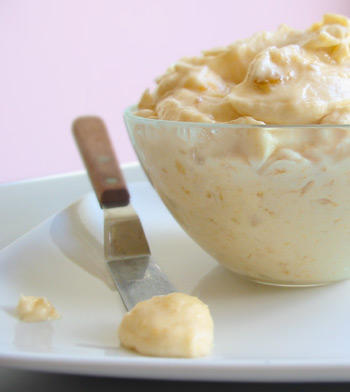 Now longtime readers know that I claim to not be much of a baker, but I love a little something sweet on an almost daily basis. And while I might not be a baker of grandiose proportions, I do have an active imagination, an imagination that dreams of creating adorable confections that lead me to semi-homemade creations of the week.
Now longtime readers know that I claim to not be much of a baker, but I love a little something sweet on an almost daily basis. And while I might not be a baker of grandiose proportions, I do have an active imagination, an imagination that dreams of creating adorable confections that lead me to semi-homemade creations of the week.
In my book, there is nothing wrong with using a cake mix from time to time. In fact, there are people out there (you know who you are, and wave your cheating flag high) who have never made a cake entirely from scratch. While cake from a mix is fine, homemade frosting is truly delicious, easy to make, and will bring the cake from an average, perfectly acceptable dessert to a stupendous, dreamy sweet of immense proportions.
 How about some Babycakes with Apricot Buttercream and Chocolate Ganache? Bigger than a petit-fours yet smaller than a slice of cake, these cakes feel all the more special because they are individual, self-contained units. It’s like receiving your very own diminutive cake for dessert. With a biscuit cutter, simply cut out individual rounds from a standard sheet cake. Slice the rounds in two, fill with the homemade buttercream of your choice, and spoon luscious, rich chocolate ganache over the top. I adorned each babycake with a single candy violet, for both color, and the crispy, perfume-like flavor.
How about some Babycakes with Apricot Buttercream and Chocolate Ganache? Bigger than a petit-fours yet smaller than a slice of cake, these cakes feel all the more special because they are individual, self-contained units. It’s like receiving your very own diminutive cake for dessert. With a biscuit cutter, simply cut out individual rounds from a standard sheet cake. Slice the rounds in two, fill with the homemade buttercream of your choice, and spoon luscious, rich chocolate ganache over the top. I adorned each babycake with a single candy violet, for both color, and the crispy, perfume-like flavor.
There is something so delightfully greedy, and self-indulgent about having a babycake versus a slice of actual cake for dessert. Both are charming and decidedly sweet, but only one is well…bourgie. So go ahead, all you cheaters out there (me included), mix up a batch of buttercream, and go to town.



 I never knew how easy it is to make English Muffins for yourself, perhaps even easier (or at least less rising time is called for) than when you are making a loaf of bread. Recently I brought out my
I never knew how easy it is to make English Muffins for yourself, perhaps even easier (or at least less rising time is called for) than when you are making a loaf of bread. Recently I brought out my 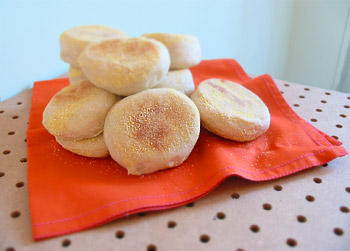
 When making flavored alcohol at home, the cheaper the better. No Grey Goose, or even Smirnoff vodka here, just VODKA, the kind that comes in a plastic jug and is hidden at the bottom of the shelf at the liquor store. You want the liquor to be absolutely flavorless; that way it will take on the flavors with which you are infusing it.
When making flavored alcohol at home, the cheaper the better. No Grey Goose, or even Smirnoff vodka here, just VODKA, the kind that comes in a plastic jug and is hidden at the bottom of the shelf at the liquor store. You want the liquor to be absolutely flavorless; that way it will take on the flavors with which you are infusing it. 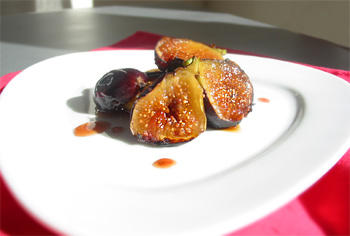
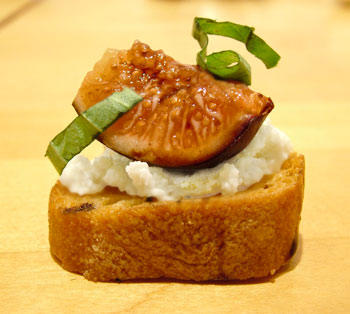


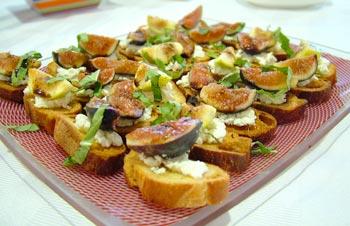
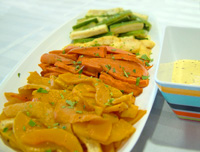 Roasted Vegetables with Roasted Garlic and Stone Ground Mustard Aioli
Roasted Vegetables with Roasted Garlic and Stone Ground Mustard Aioli